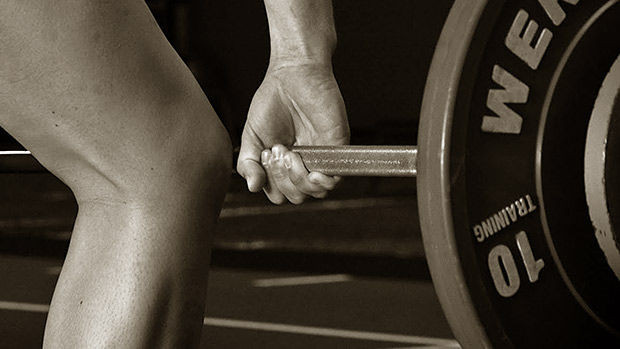Start using bands with your deadlifts to take your gains to the next level. Now, you're probably thinking this isn't feasible in a commercial gym without a specialized setup, but there's a simple solution that only requires you to spend a few bucks on a few different thicknesses of bands.
Here's how to do it with both sumo and conventional:
In this case, the bands essentially add resistance as the bar comes off the ground, making it get "heavier" as you near the top of the movement.
Here are the benefits of using accommodating resistance:
1. It’ll Help You Break Through Sticking Points
Accommodating resistance allows for greater accountability with bar speed compared to just straight weight. As tension increases through the range of motion (ROM) you're forced to accelerate through each rep and not get complacent.
2. It Alters the Strength Curve
Accommodating resistance coincides with the strength curve, meaning your band tension will be highest where you're strongest (top of the movement) and lowest where you're weakest (bottom of the movement).
3. It Improves the Rate of Force Development (RFD)
The bands provide more resistance without compromising bar speed.
4. It Optimizes the Force-Velocity Curve
As weight increases, bar speed decreases. Maximal strength force is high and velocity is low. Accommodating resistance gives you the ability to develop speed-strength, whereas simply adding straight weight will inevitably cause bar velocity to decline.
5. It Helps You Learn To Absorb Force
It teaches you how to absorb more force which in turn allows you to become more powerful.
6. It Expands Movement Acceleration ROM Window
Without bands or chains, bar deceleration is inevitable. When bar speed is too slow, RFD simply can't be developed. Accommodating resistance forces you to accelerate through full ROM, and becoming more explosive translates to becoming stronger.
7. It Reduces Muscular/Articular Wear and Tear
The use of accommodating resistance can also be used for Max Effort work. You'll be able to use less straight weight with overload occurring at the top of the deadlift. As a result, external loading through ROM is lower which equates to less breakdown and soreness.
For a movement like a max-effort rack deadlift, where loading for some can reach supramaximal levels, being able to use accommodating resistance will reduce the amount of wear and tear that would normally occur with just straight weight.





